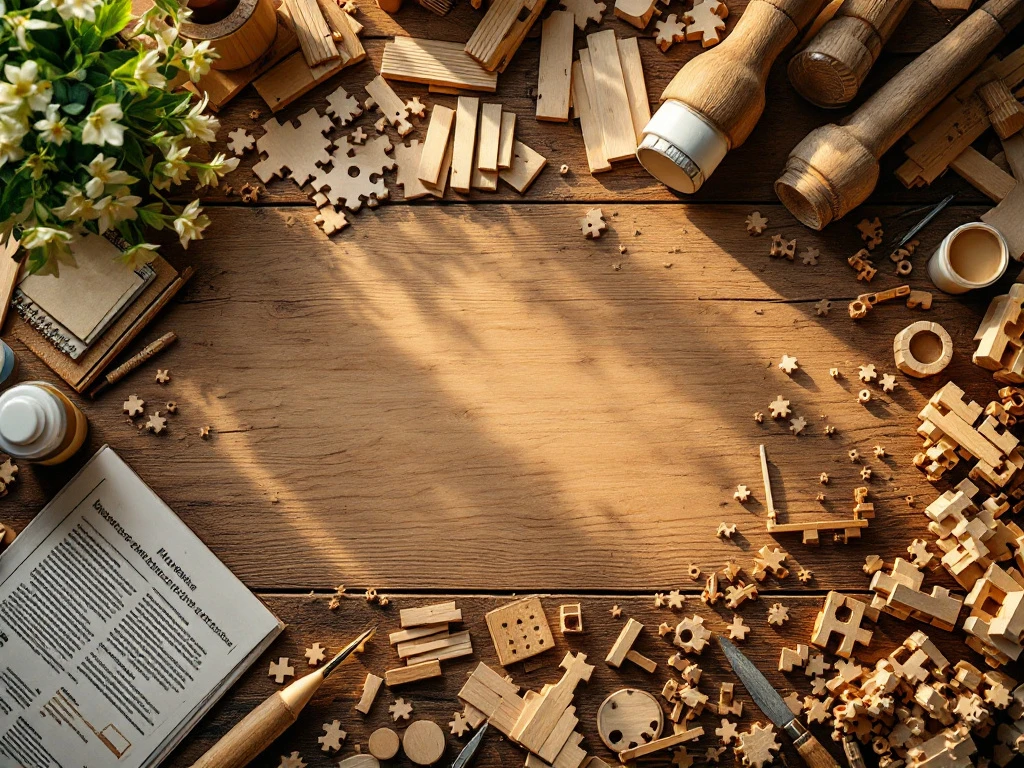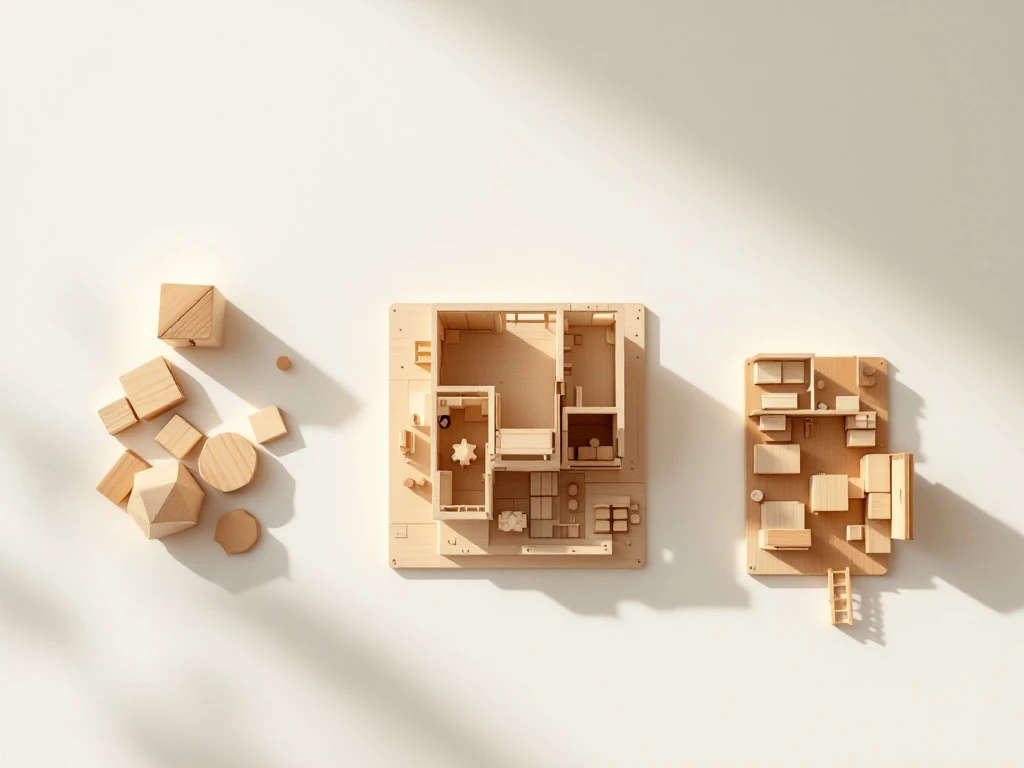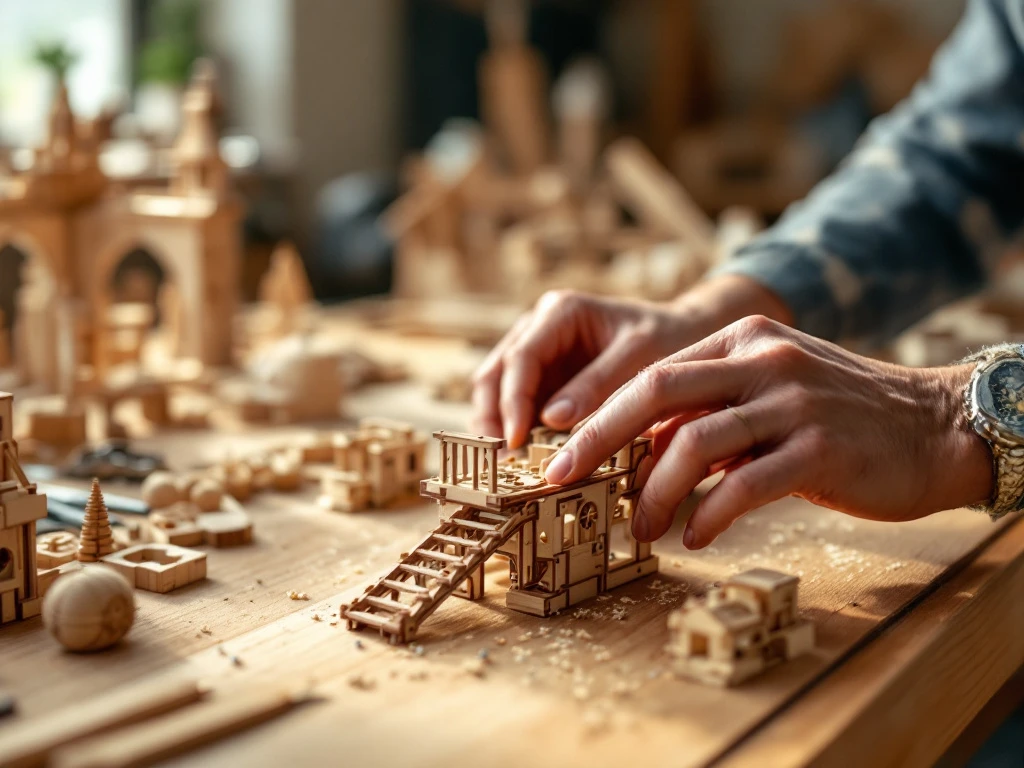-
 Dave Vinke
Dave Vinke
- Leestijd: 5 min
- Laatst geüpdatet: 13/10/2025
Wooden building kits offer children much more than just entertainment. They develop essential skills such as fine motor abilities, problem-solving thinking, concentration and patience. Through hands-on building, children learn to plan, correct mistakes and devise creative solutions. These natural materials stimulate the senses and promote sustained focus without the distraction of screens.
What are wooden building kits and why are they so popular with parents?
A wooden building kit is a set of natural wood components that allows children to construct three-dimensional objects. Unlike plastic alternatives, wooden building kits offer a warm, natural texture that stimulates the senses and creates a calming building experience.
Parents deliberately choose wooden building kits for their educational value and durability. The natural material feels more pleasant than cold plastic and lasts for generations. Wooden components make a different sound when they tap against each other, which helps children develop their hearing and spatial awareness.
The popularity also stems from the safety of the material. Quality wooden building kits contain no harmful chemicals and are often finished with natural, child-safe lacquers. This gives parents peace of mind while their children play and learn.
Which motor skills do children develop by playing with wooden building kits?
Wooden building kits stimulate fine motor skills by having children work with small components that require precision. Holding, positioning and connecting wooden elements strengthens the muscles in fingers, hands and wrists, which is essential for later skills like writing.
Hand-eye coordination improves significantly when children must place wooden components in the right position. They learn to control their movements and coordinate them with what they see. This skill is crucial for many daily activities and school tasks.
Finger dexterity develops naturally through manipulating different shapes and sizes. Children learn to adjust their grip to each component and develop a sense of pressure and movement. This lays a strong foundation for more complex manual skills later in their development.
How do wooden building kits stimulate children’s problem-solving thinking?
Building kits confront children with logical challenges that must be solved step by step. They learn to think ahead, consider different possibilities and choose the best approach. This process of trial and error develops their analytical skills in a playful way.
When a construction doesn’t work as planned, children must adapt their strategy. They learn to recognize mistakes, think of alternative solutions and persevere until they succeed. This resilience and flexibility in thinking are valuable for all aspects of their lives.
The three-dimensional nature of wooden building kits requires spatial awareness. Children must visualize how components fit together and what the end result will look like. This develops their ability to understand abstract concepts and tackle complex problems.
Why are wooden building kits better for concentration than digital toys?
Wooden building kits require sustained attention without the constant stimulation of screens, sounds or flashing images. Children learn to focus on one task for extended periods, which strengthens their concentration and perseverance.
The tactile nature of wood keeps children in the moment. They can feel the texture, smell the scent and experience the weight. This sensory experience holds their attention without overstimulating them as digital toys often do.
Building kits teach children patience because results aren’t immediately visible. They must work step by step and can’t simply press a button for instant gratification. This develops their ability to wait for rewards and show persistence with challenging tasks.
What age is best to start with wooden building kits?
Children can start with simple wooden building kits with large components from age 3. At this age, their motor skills are sufficiently developed to play safely with wood, provided the components are large enough to prevent choking.
For toddlers aged 3-5, building kits with large, simple shapes are ideal. They can stack, sort and make simple constructions. Children aged 6-8 can handle more complex sets with more components and detailed instructions.
Older children from age 9 can use challenging building kits that require technical skills. Always choose sets that are just above your child’s current level to stimulate growth without causing frustration. In our model building collection you’ll find various complexity levels for all ages. For specific wooden options, check out our range of wooden building kits with detailed age recommendations.
Wooden building kits are valuable learning tools that help children grow in multiple developmental areas simultaneously. They combine fun with learning and offer a healthy alternative to screen time. By making the right choice for your child’s age, you’re investing in their cognitive, motor and emotional development in a sustainable and natural way.
Frequently Asked Questions
How do I maintain wooden building kits so they last long?
Store wooden building kits in a dry place and clean them regularly with a slightly damp cloth. Avoid chemical cleaners and let the wood dry thoroughly after cleaning. Check periodically for splinters or damaged components and replace them if necessary to ensure safe play.
What should I do if my child gets frustrated during building?
Encourage your child to take breaks and help by asking questions instead of giving direct solutions. Start with simpler projects to build confidence and celebrate small successes. Show that making mistakes is part of the learning process and that persistence is rewarded.
Can wooden building kits be used for group activities at school?
Yes, wooden building kits are excellent for classroom activities because they stimulate cooperation and communication. Choose sets with enough components for multiple children and ensure clear working agreements. They promote teamwork and help children learn from each other by sharing different building strategies.
How can I assess the difficulty level of a building kit for my child?
Pay attention to the number of components, complexity of instructions and required fine motor skills. Start with sets that are 20-30% more challenging than what your child can already do. Observe how long your child can stay focused and choose accordingly. Most manufacturers provide clear age recommendations that serve as a starting point.
Are there special techniques to help children follow building instructions?
Teach children to first sort and identify all components before they begin. Work through the instructions step by step and check each phase before continuing. Use visual aids like pointing to components in the drawing and encourage children to describe aloud what they're doing.
What are the advantages of wooden building kits over other construction toys?
Wooden building kits offer a unique sensory experience through their natural texture, scent and sound. They are more environmentally friendly, durable and contain no harmful chemicals. Unlike plastic alternatives, they stimulate the senses in a calming way and offer an authentic, timeless play experience that lasts for generations.
Table of contents
Much viewed
More blogs

How do you prepare for difficult wooden construction kits?

What are the different difficulty levels of wooden building kits?






